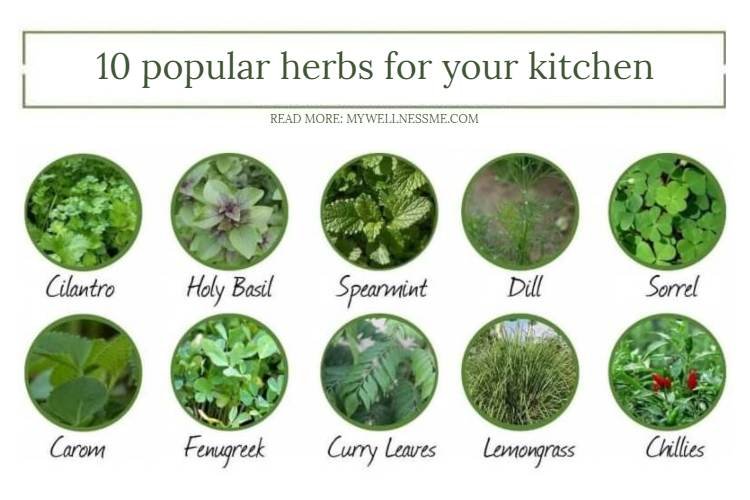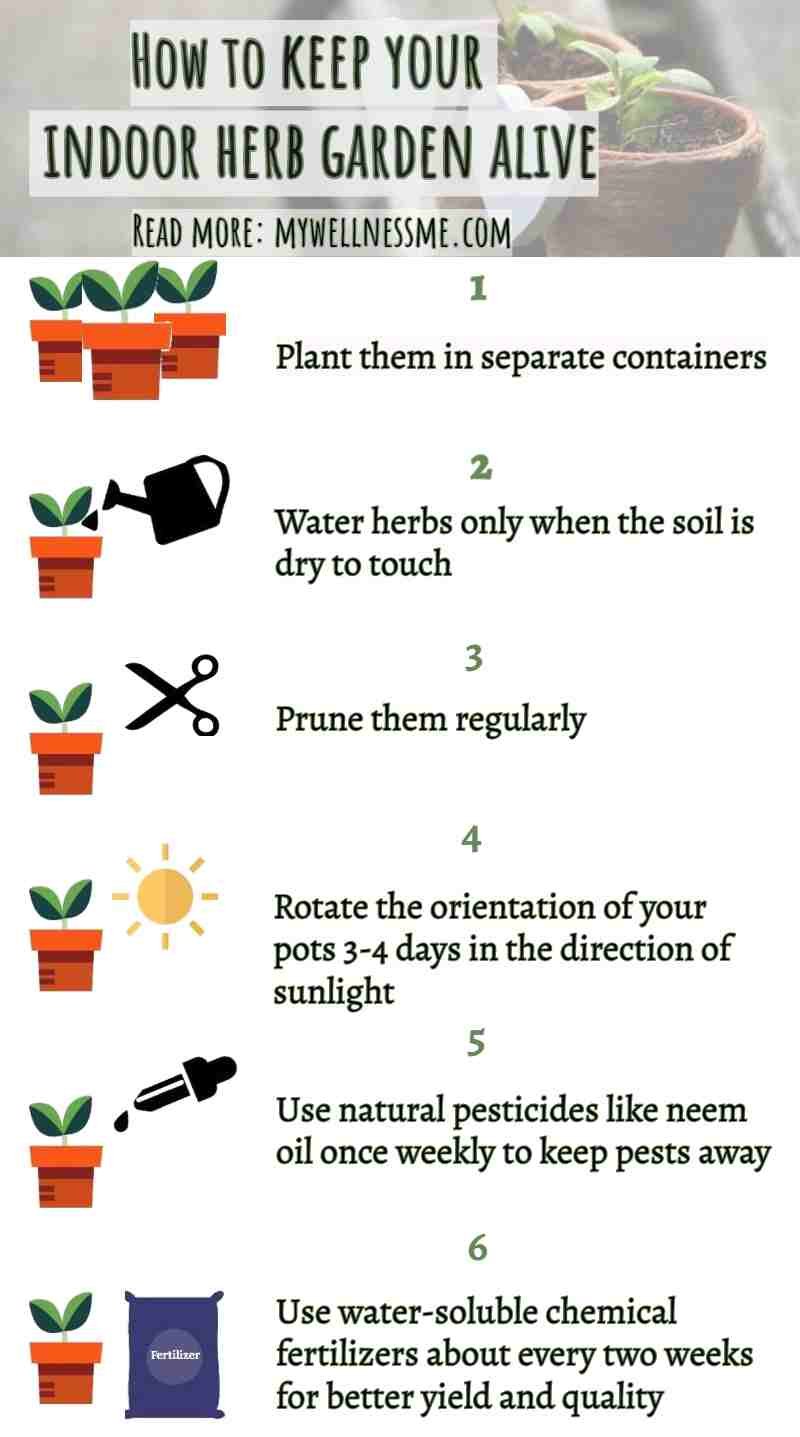There’s something warm and homely about growing your indoor herb garden. Having fresh herbs within your reach will inspire the cook in you besides adding more greenery to the surrounds. And planting a garden is one of the ways to reduce your carbon footprint as well as your plastic footprint.
It is also a crucial aspect of garden ecotherapy.
What if you live in a big congested city? Do you have a balcony? A window sill that gets 5-6 hours of sunlight every day? Lovely. Even with minimal space, if you get good sunlight you can own a beautiful garden. Yes, if you think you have a non-green thumb, I got you covered.
These indoor herb garden ideas are easy and perfect for beginners and those into slow living.
Let’s dive right in.
Things you need
- Any container made of clay, cardboard, wood, plastic, ceramic or tin will work as long as you punch drainage holes in them. Look around the house for containers before you decide to go shopping for new pots.
- A tray to place underneath to collect and drain off excess water.
- Potting soil. Mix one part garden soil with one part homemade compost (from materials like eggshells, vegetable and fruit scraps, tea leaves, coffee grounds, shredded newspaper, dry leaves, peanuts shells…). Of course you can always buy readymade compost.
- Coarse gravel to line the pots at the bottom. Retention of water causes root to rot and that stinks A LOT!
- A spray bottle to add moisture without injuring the delicate seedlings.
- Seedlings to get results much sooner. And because germination is fickle.
When selecting herbs take a cue from what you regularly cook.
If the kitchen is not your favorite place then you can grow other herbs for natural remedies. For example, I’ve used some for my DIY mosquito repellant.

1. Coriander/Cilantro
This beloved herb usually comes free (along with green chillies) with the vegetable stack you buy from your favorite cart vendor.
However, it is used so extensively you might still want to grow some of your own.
I know I always need a little cilantro to garnish a lot of my dishes. And it is easy when it happens to be growing right outside my window. At home, we love the combination of coriander, chillies and smoked tomatoes with salt to accompany all kinds of dumplings.
Use a wide pot under direct sunlight to sow the seedlings at a distance of 3–6 inches. Use spray bottle to water them daily. They are ready to be harvested at about 6 inches tall. Harvest not more than a third of the plant. Pruning a third of the leaves each week also ensures a fuller, healthier bush.
Best time to grow: February and March
2. Spearmint
Whether you are using it to decorate your mocktail or making green chutney or aid in indigestion, this fragrant herb is a great addition to your herb garden.
Spearmint or pudina grows best in sunlight and moist soil and it grows fast like nobody’s business. Besides, they are extremely easy to grow. You can even plant a market-bought stalk with roots directly, after removing the leaves!
Give this energetic herb a separate container all to itself before it invades your other herbs. Rotate the pot every 3–4 days for nice full foliage. Like coriander, only harvest one-third at a time.
Best time to grow: February and March
3. Holy Basil
Holy basil or tulsi is highly revered in Hinduism and used for medicinal purposes as much as cooking.
This aromatic plant needs a sunny and humid environment for healthy growth. Place the seedlings half an inch into the soil, 2–3 inches away from each other and in a place where they can receive direct sunlight for 6–7 hours. Keep rotating every 3–4 days.
When they are about 7 inches tall, transfer them to a separate pot to give them sufficient room to grow. Keep the soil slightly moist by watering daily in summers and every two days in winters. Periodically prune the top branches for thicker foliage.
Like with coriander and spearmint, only harvest one-third of the plant at a time. If your herb starts flowering, pinch off the flowers so it grows more leaves.
Best time to grow: Right before the monsoons. The combination of heat and humidity is perfect for its healthy growth.
4. Lemongrass
Lemongrass has wide use in all kinds of Asian cuisine. And it is super easy to grow.
This herb gives that nice citrus zing to your curries, stir fries, teas and soups. Besides being a favorite in the kitchen, lemongrass also provides a spectrum of medical benefits.
Get some stalks from the market and let them stand in about 1–2 inches of water. Fast forward 2–3 weeks, your lemongrass should be about 2 inches tall. Transfer to a sunlit pot and make sure it stays hydrated. Easy peasy.
Best time to grow: Right before winter sets in. It flowers in Nov–Dec.
5. Curry Leaves
A curry leaves pot is something people will most likely include when starting a balcony garden. This herb is native to India and Sri Lanka. It has a slightly spicy smell and is mainly used for seasonings, like in sauces or a dish like sambhar.
Plant stem cuttings of about 3 inches directly into the soil. Make sure the soil is always a little moist. This herb is happy under abundant sunlight (but not harsh sunlight of those hot May and June summer days). Better the sunlight, sharper the flavor.
When it is about 6 inches tall the herb is ready to be harvested. Prune the top set regularly and pinch off the berries to encourage more leaf growth.
Best time to grow: Any time of the year with tropic and subtropical environment. It can also tolerate mild freezing temperatures but needs a lot more care, or it will shed its leaves and only start a new growth when spring comes around.
6. Fenugreek
The name fenugreek means “Greek hay.” This herb is native to southern Europe and Asia and has been used as cattle fodder since ancient times. Fenugreek is cultivated in India for its ocher seeds, which are an important ingredient for several pickles and spice blends. That distinct smell in American curry powder? Yup, that’s fenugreek.
Culinary usage aside, fenugreek has long been used in alternative medicine.
It is best to plant this herb in a wide tray since you’re going to need a lot of it for just one dish. Plant the seedlings 4 inches apart. This herb needs abundant sun and well drained soil. The seedlings will have matured when they are about 6 inches tall.
To harvest the leaves pull them by the roots. Cook fresh or hang them upside down until crispy dry. To harvest the seeds, let the pods turn yellow-brown and pop open.
Best time to grow: Winters
7. Chilli Pepper
What is an Indian dish without those fiery red and green chillies?
Plant 1-1/2 inch saplings in a pot with excellent drainage. They will need daily sunlight for 6–7 hours and water every 2–3 days. In 2–3 months, you’ll be plucking your very own, home grown green chillies. Harvest when they have a shiny coat.
If you prefer red chillies, you may have to wait for another week or two.
Prune periodically for a bushier, more compact foliage.
Best time to grow: Late winter to spring
8. Carom
“Pakodas” (vegetables or meat coated in gramflour and deep fried) are not complete without ajwain seeds. And drinking warm water with ajwain seeds is often my go-to fix for stomach ache.
Herbs are grown for their leaves and not blooms and fruits. Technically ajwain seeds are not “seeds” but the fruit of the herb. Still, both the leaves and seeds are extremely effective for tummy ailments.
Growing the ajwain plant is super easy. Take fresh cuttings and plant them 2 inches deep into the soil and 6 inches apart. The plant requires minimal maintenance. Place the pot in sunlight and water whenever the soil feels dry to touch.
This is a prolific herb like spearmint, so make sure it has its own pot.
Best time to grow: Any time
9. Dill
Dill is widely used for culinary as well as medicinal purposes. The sprigs have a nice clean taste and are prevalent in South Indian cuisine to flavor vegetables and meat and fish dishes.
The herb offers tremendous nutritional value and is filled with calcium.
The plant favors well-drained and sunny spots but does not take kindly to windy conditions or transplantation (ensure to use stalks for support). For best results, sow them during the spring season.
You can harvest when it has 4–5 leaves.
Best time to grow: Spring and early summer
10. Indian Sorrel
This herb is a good source of Vitamin C. You can use them as an alternative to tomatoes in the South Indian dish, rasam or combine them with coriander and mint leaves for green chutney.
This sour tasting herb is also effective for treating insect bites.
Plant the seedlings 5–6 inches apart and place the herb in a spot that gets direct sunlight for at least 6 hours a day, Ensure to regularly water the pot. While sunlight is ideal for the plant’s growth, sorrel does all right in shade too.
Best time to grow: Early spring
Let’s say you have decided on the plants for your indoor herb garden…
Step 1: Start planting the seedlings in the pots. First, create a hole in the soil that is wide enough for the entire root system to fit. Now carefully fill the hole around the root with the loose dirt and pat it down. Don’t pack it too tight but make sure the soil is solid enough to support the roots and the plant.
Give each of the herbs their own personal pot and a good gap between seeds. This offers them air and freedom to grow and you don’t have to worry about the menace of an invasive herb.
I probably don’t need to tell you to ensure that no roots are broken during the process of re-potting.
And never (ever!) place the pots close to dry heat areas such as air vents or stoves.
Step 2: After finishing with Step 1, water the plants. This will help familiarize and establish them in their new surroundings.
Care and maintenance
Here’s how to keep your indoor herb garden alive:
- Plant them in separate containers.
- Water herbs only when the soil is dry to touch.
- Prune them regularly.
- Rotate the orientation of your pots every 3–4 days in the direction of sunlight.
- Use natural pesticides like neem oil once a week to keep pests away.
- Use water-soluble chemical fertilizers about every two weeks for better yield and quality.
- Place marker flags to keep track of plants.

Watering: An indoor herb garden does not need much water and so the soil should ideally be kept dry between watering sessions. Yellow leaves are the first signs that the plant has had too much to drink.
Water the herbs at the base, where the stem meets the soil and don’t water the leaves.
Pruning: Prune your kitchen herb garden regularly. Pruning helps plants grow thicker. Make sure they have grown at least 3 sets of leaves and do not prune more than 30 percent of the plant at a time. Rotate the pots regularly so that no side gets excessive sunlight, which can make the herb bend in one direction.
Pest attack: Use natural pesticide neem oil once every week to keep pests away.
Fertilizers: Water-soluble chemical fertilizers once every fortnight can result in better quality herbs.(Try “liquid fish”) A nitrogen-rich fertilizer is also a good option.
NOTE: Too much fertilizer reduces the flavor of the herb (esp. mint).
One sure sign of over fertilization is the herb tips turning brown. If this happens then water the herbs till it pours out of the drainage holes and repeat the process about three times. This washes away the fertilizers.
Timing: Winters aren’t the best time for growth so in colder months, water sparingly and let nature do its thing.
I know I have harped on seedlings but if you prefer to plant seeds, then it’s possible to do so. First, soak them in water and then place them between damp towels for 3–4 hours. Sprinkle them over the soil and cover them with approximately 1/4 inch of extra soil.
Marker flags can be used to keep track of the herbs.
Now that you know that growing herbs in your kitchen is not all that hard, are you ready for your own little indoor herb garden?


2 comments
I love indoor herb gardens; picking the fresh leaves to make a dish means so much more then taking it out of a bottle. 🙂
A friend of mine gave me a cute garden as a gift, which inspired me to give one to my friend! The little clay pots and seeds it comes with are perfect, and it is much easier to grow then an outside plot.
What a great gift. Indoor herb gardens are perfect for city dwellers since they are so easy to take care of. I agree fresh herbs are anytime better than bottled ones. 🙂
Comments are closed.